Dolphin Fish – Introduction
Dolphin fish, also known as mahi-mahi or Dorado, a true marvel of the ocean!. These majestic creatures possess a unique blend of beauty, strength, and agility. With their vibrant colors, sleek bodies, and remarkable leaps, dolphin fish are a sight to behold.
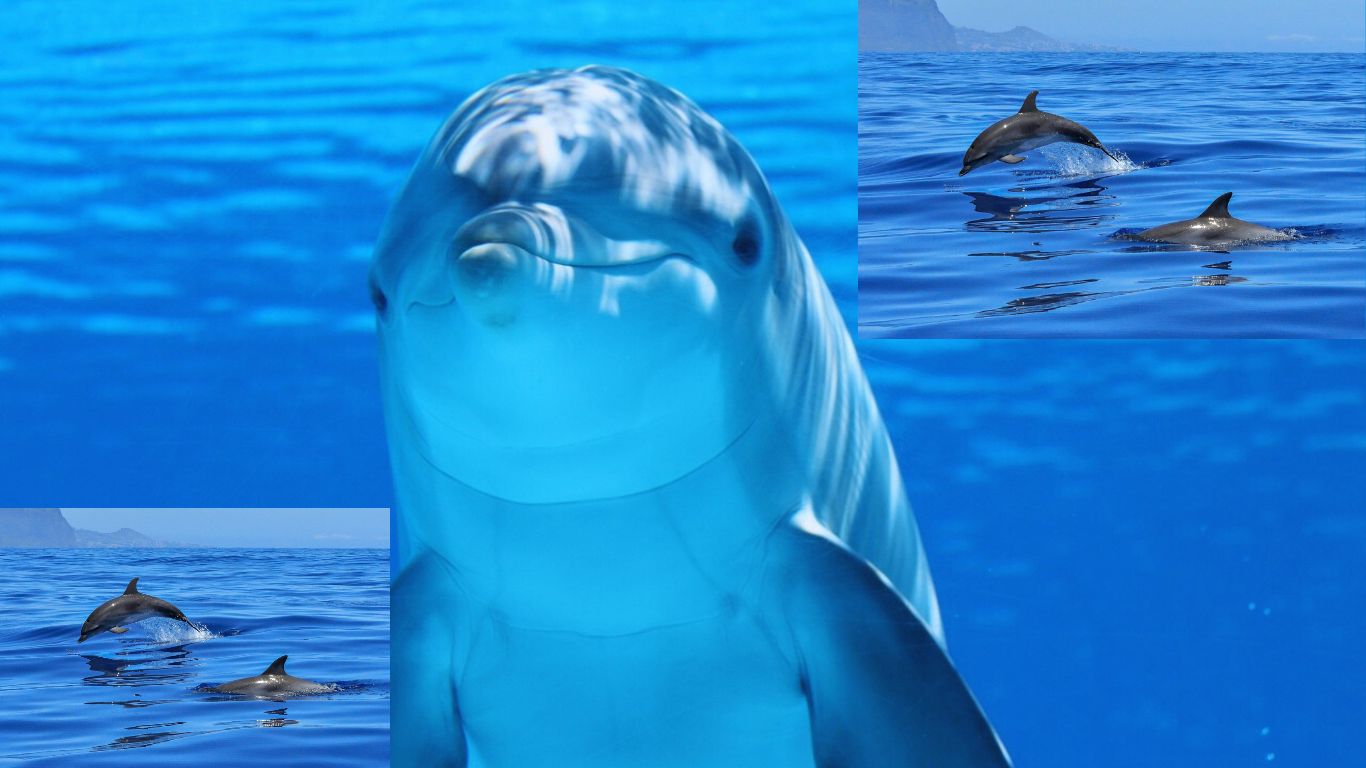
Dolphin fish, is scientifically known as Coryphaena hippurus, a fascinating marine species that goes by multiple names, including Mahi-Mahi and dorado. The name “Mahi-Mahi” originates from the Hawaiian language and translates to “strong-strong,” reflecting the fish’s impressive strength and speed. On the other hand, “dorado” comes from Spanish, meaning “golden,” alluding to the fish’s vibrant golden-green and blue hues. These alternative names are often used interchangeably in different regions. Dolphin fish play a significant role in marine ecosystems as apex predators. Their feeding habits help regulate prey populations, contributing to the balance and health of the food chain. Additionally, their seasonal migrations and habitat utilization contribute to the connectivity and diversity of oceanic regions. Recognizing the significance of dolphin fish in marine ecosystems is crucial for promoting their conservation and sustainable management, ensuring the long-term health of our oceans.
So whether you’re an avid angler, a nature enthusiast, or simply curious about the wonders of the sea, join us as we embark on a journey to unravel the mysteries surrounding these captivating marine wonders.
Dolphin Fish – Appearance, Size, Weight and Lifespan
Dolphin fish exhibits distinct physical characteristics that make them truly remarkable.
Here are some key features of their appearance, size, weight and lifespan:
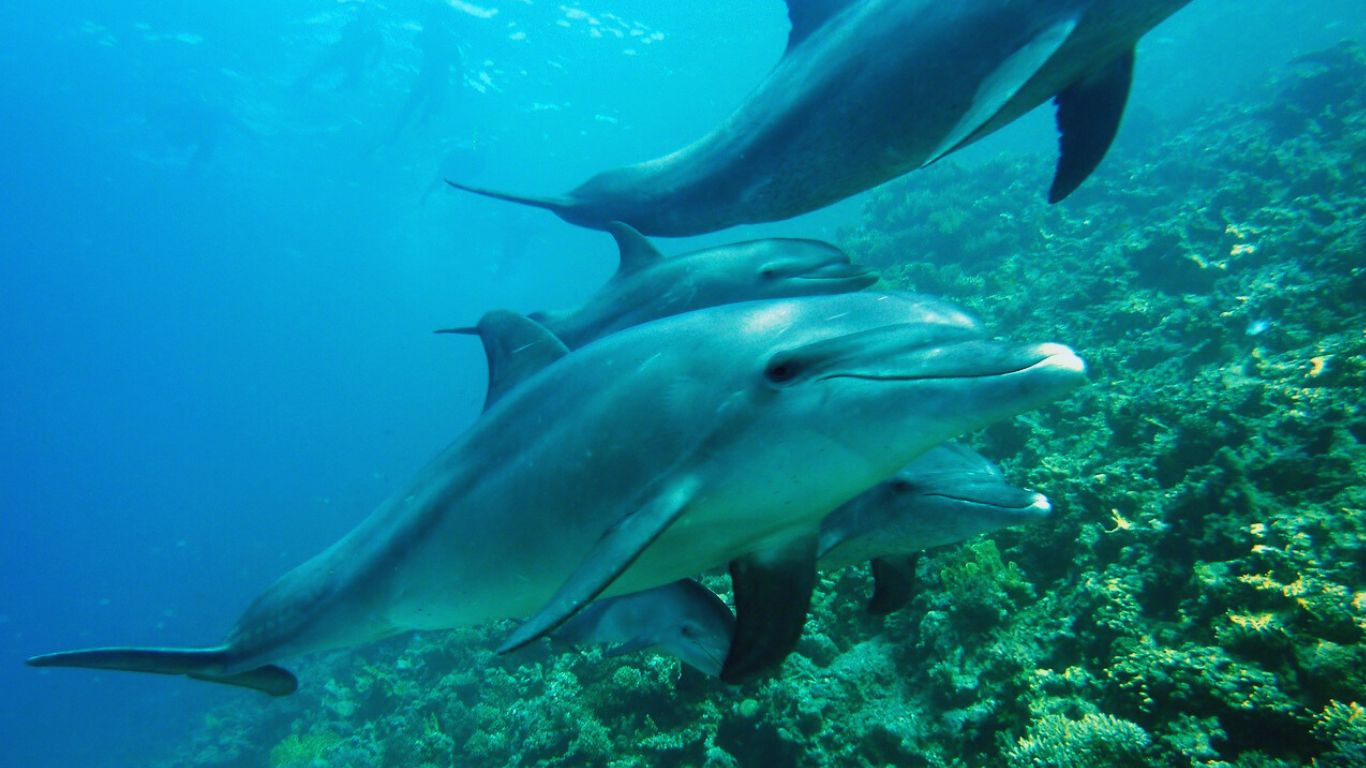
1.Look and appearance: Dolphin fish, also known as mahi-mahi or dorado, have a streamlined and elongated body shape with a pronounced forehead. The head slopes down to a pointed snout, and their mouth is filled with sharp teeth. One of their most notable features is their large, fan-shaped dorsal fin, which runs the length of their back. They also have a long anal fin and a forked tail fin.
In terms of appearance, dolphin fish exhibit vibrant and eye-catching colors. Their body is covered with scales that range in shades of green, blue, and gold, often shimmering in the sunlight. They have a distinct pattern of dark spots on their sides, which fade as they grow larger. These spots resemble dots or dashes and are reminiscent of the dolphinfish’s other common name, “dorado.”
2. Size: Dolphin fish are known for their relatively large size. On average, adult dolphin fish range between 3 to 6 feet (0.9 to 1.8 meters) in length, although some individuals can reach lengths of up to 8 feet (2.4 meters).In terms of weight, adult dolphin fish can range from 15 to 30 pounds (6.8 to 13.6 kilograms), with exceptional individuals reaching weights of over 50 pounds (22.7 kilograms).
3. Body Shape: They have a sleek and elongated body shape, designed for swift and agile movement through the water. The body tapers from a broad head to a slender, streamlined tail.
4. Coloration: One of the most striking features of dolphin fish is their vibrant and iridescent coloration. Their backs are usually a deep blue or greenish-blue, fading to a golden or yellow hue on their sides and bellies. These colors often change and intensify, especially during courtship or when they are excited or stressed.
5. Dorsal Fin: Dolphin fish have a large and prominent dorsal fin, which runs along the length of their back. This fin is tall and extends vertically, giving them a distinct appearance.
6. Caudal Fin: Their caudal fin, also known as the tail fin, is deeply forked, allowing for powerful propulsion and high-speed swimming. The caudal fin is often a brilliant shade of yellow.
7. Pectoral Fins: Located on the sides of their body, the pectoral fins of dolphin fish are long and triangular in shape. These fins help with steering and maneuvering through the water.
8. Teeth: Dolphin fish possess sharp teeth that are adapted for capturing and feeding on their prey. Their mouths are filled with numerous small, needle-like teeth.
9. Life Span: The life span of dolphin fish is relatively short compared to some other fish species. On average, they live for around 4 to 5 years. However, factors such as habitat, food availability, and predation can influence their life expectancy. It’s important to note that environmental conditions and fishing pressure can also impact the overall population dynamics and longevity of dolphin fish.
These features collectively contribute to the beauty and agility of dolphin fish, making them an awe-inspiring species to behold in the vast expanses of the ocean.
Dolphin fish – Habitat and Distribution
Dolphin fish, also known as mahi-mahi or dorado, inhabit a wide range of warm and tropical waters around the world. Their natural habitat is primarily found in the open ocean, particularly in areas with surface temperatures ranging from 70 to 85 degrees Fahrenheit (21 to 29 degrees Celsius).
Here are some key regions where dolphin fish are commonly found:
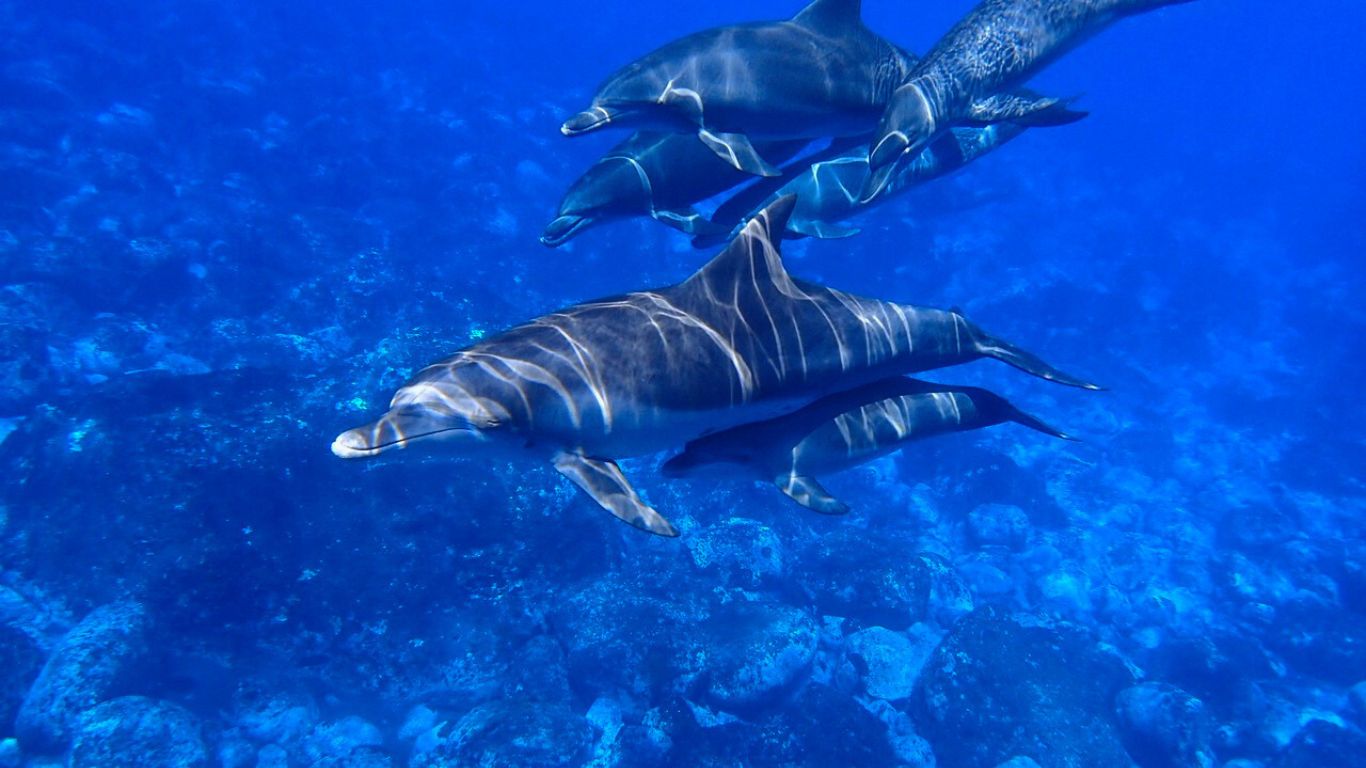
1. Atlantic Ocean: Dolphin fish are prevalent in the Atlantic Ocean, especially in the western and eastern regions. They can be found along the coasts of North America, Central America, and South America. Popular areas for dolphin fish fishing include the Gulf of Mexico, the Caribbean Sea, and the waters off the eastern coast of the United States.
2. Pacific Ocean: Dolphin fish are abundant in the Pacific Ocean, particularly in the tropical and subtropical regions. They can be found along the coasts of North America, Central America, South America, and the Pacific islands. The waters around Hawaii, Costa Rica, Mexico, and Ecuador are known for their dolphin fish populations.
3. Indian Ocean: Dolphin fish can be found in the Indian Ocean, primarily in the warm waters near the equator. They are commonly found along the eastern coast of Africa, the Arabian Sea, and the waters surrounding the Maldives and Sri Lanka.
4. Offshore Islands: Dolphin fish are frequently encountered near offshore islands and seamounts, where oceanic currents and upwellings create productive feeding grounds. These include areas such as the Azores in the Atlantic Ocean, the Seychelles in the Indian Ocean, and the Hawaiian Islands in the Pacific Ocean.
It’s important to note that dolphin fish are highly migratory and can cover vast distances in search of food and suitable water temperatures. Their ability to travel across oceans contributes to their widespread distribution and presence in various marine habitats.
Dolphin Fish – Feeding Behavior
The feeding behavior of dolphin fish, also known as mahi-mahi or dorado, is fascinating to observe. They are carnivorous predators with a diverse diet, and their feeding habits can vary depending on their size and life stage. Here are some key aspects of their feeding behavior:

1. Predatory Behavior: Dolphin fish are opportunistic hunters and exhibit an aggressive feeding style. They are known to feed near the ocean’s surface, where they actively pursue their prey. Their sharp teeth and powerful jaws enable them to capture and consume a wide range of prey items.
2. Diet: Dolphin fish have a varied diet that includes small fish, squid, shrimp, crabs, and other crustaceans. They are known to feed on species like flying fish, sardines, mackerel, and various baitfish that inhabit the surface waters. They are also attracted to floating debris and seaweed patches, which can harbor small organisms and serve as feeding grounds.
3. Hunting Techniques: Dolphin fish employ different hunting techniques depending on their prey. They may engage in schooling behavior, where they form groups and cooperate to herd and trap schools of small fish. They can also engage in solitary hunting, using their speed and agility to chase down individual prey items.
4. Surface Feeding: Dolphin fish are particularly skilled at feeding near the surface of the water. They are capable of leaping out of the water to capture flying fish or other prey items that are attempting to evade capture. This behavior, known as “porpoising,” is a remarkable display of their agility and hunting prowess.
5. Feeding Patterns: Dolphin fish are known to be voracious feeders, often consuming large quantities of food. They are most active during the day, especially in the early morning and late afternoon when their prey is most abundant near the surface. They may exhibit migratory feeding patterns, following currents and searching for areas rich in food resources.
It’s worth noting that while dolphin fish are formidable predators, they also serve as prey for larger marine predators, including sharks and larger predatory fish. Their feeding behavior plays a vital role in the transfer of energy within marine ecosystems and contributes to the overall balance of the food web.
Dolphin Fish – Reproduction and Life Cycle
The reproduction and life cycle of dolphin fish, also known as mahi-mahi or dorado, involve several fascinating stages.
Here’s an overview of their reproductive behavior and life cycle:
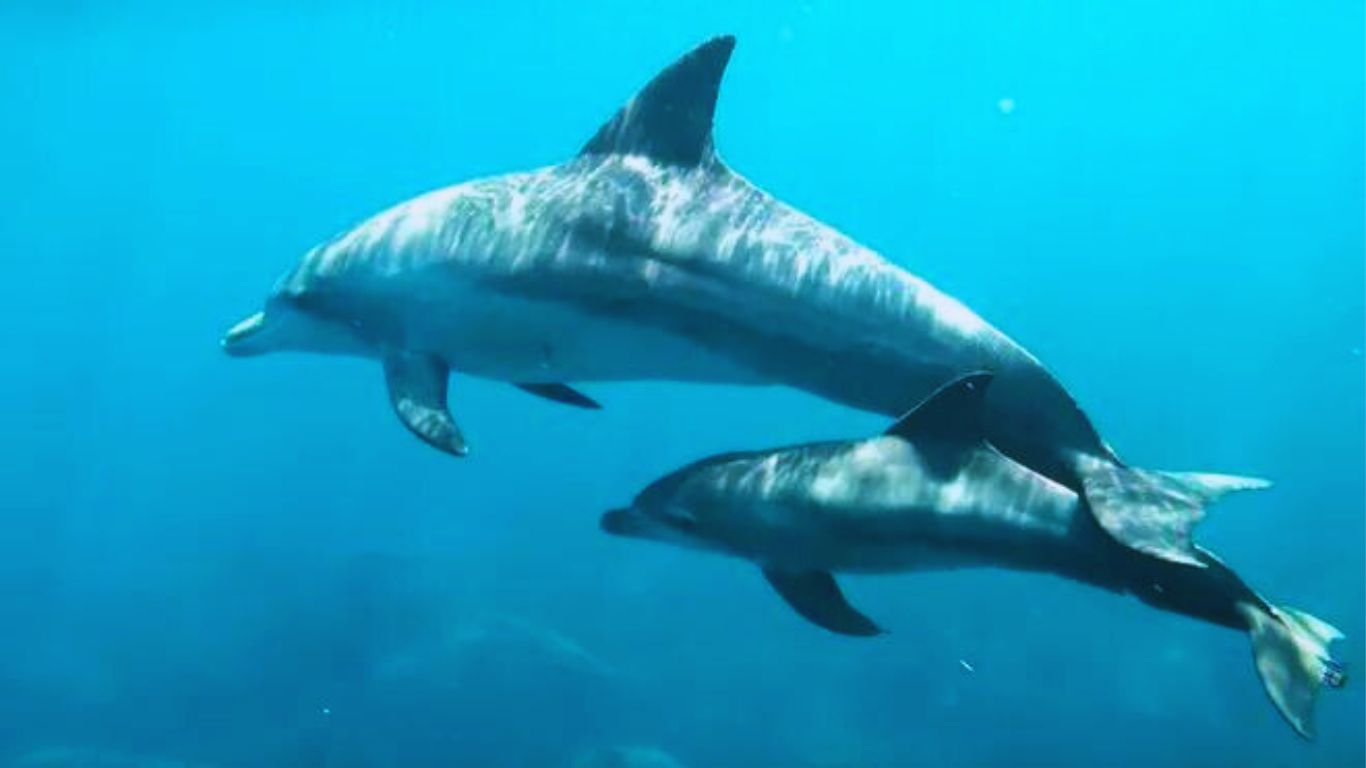
1. Sexual Maturity: Dolphin fish reach sexual maturity at around 4 to 5 months for males and 5 to 6 months for females, although this can vary based on environmental conditions and food availability. They typically attain sexual maturity when they are between 20 and 30 inches (50 to 75 centimeters) in length.
2. Courtship and Spawning: During the spawning season, which varies geographically, male dolphin fish exhibit vibrant colors and engage in courtship behavior to attract females. Mating occurs through external fertilization, where the female releases eggs into the water and the male simultaneously releases sperm to fertilize them.
3. Egg Development: After fertilization, the eggs are left to develop in the open water. The exact duration of egg development varies based on water temperature and other environmental factors but typically ranges from 24 to 72 hours.
4. Larval Stage: Once hatched, the dolphin fish larvae are tiny and transparent, measuring only a few millimeters in length. They have a long dorsal fin and are characterized by rapid growth. During this stage, they rely on planktonic organisms as their primary food source.
5. Juvenile Stage: As the larvae grow, they transition into the juvenile stage. At this point, they develop the vibrant colors and distinct body shape associated with adult dolphin fish. Juveniles tend to form schools and seek shelter in floating debris, sargassum mats, or other protective structures found in the open ocean.
6. Maturation and Adult Stage: As the dolphin fish continue to grow, they eventually reach adulthood. The timeframe for reaching full adult size can vary, but it typically occurs within the first two years of life. Adult dolphin fish are capable of reproduction and participate in the annual spawning events.
7. Lifespan: The average lifespan of dolphin fish is around 4 to 5 years, although some individuals have been known to live longer under favorable conditions.
It’s important to note that dolphin fish have relatively high reproductive potential, with females capable of producing a large number of eggs in each spawning event. This characteristic, combined with their relatively short life span, contributes to their ability to maintain stable populations despite high levels of fishing pressure.
Dolphin Fish – Ecological Importance
Dolphin fish, also known as mahi-mahi or dorado, play a significant role in marine ecosystems, both as predators and prey. Here’s an overview of their importance and their relationships with other species:
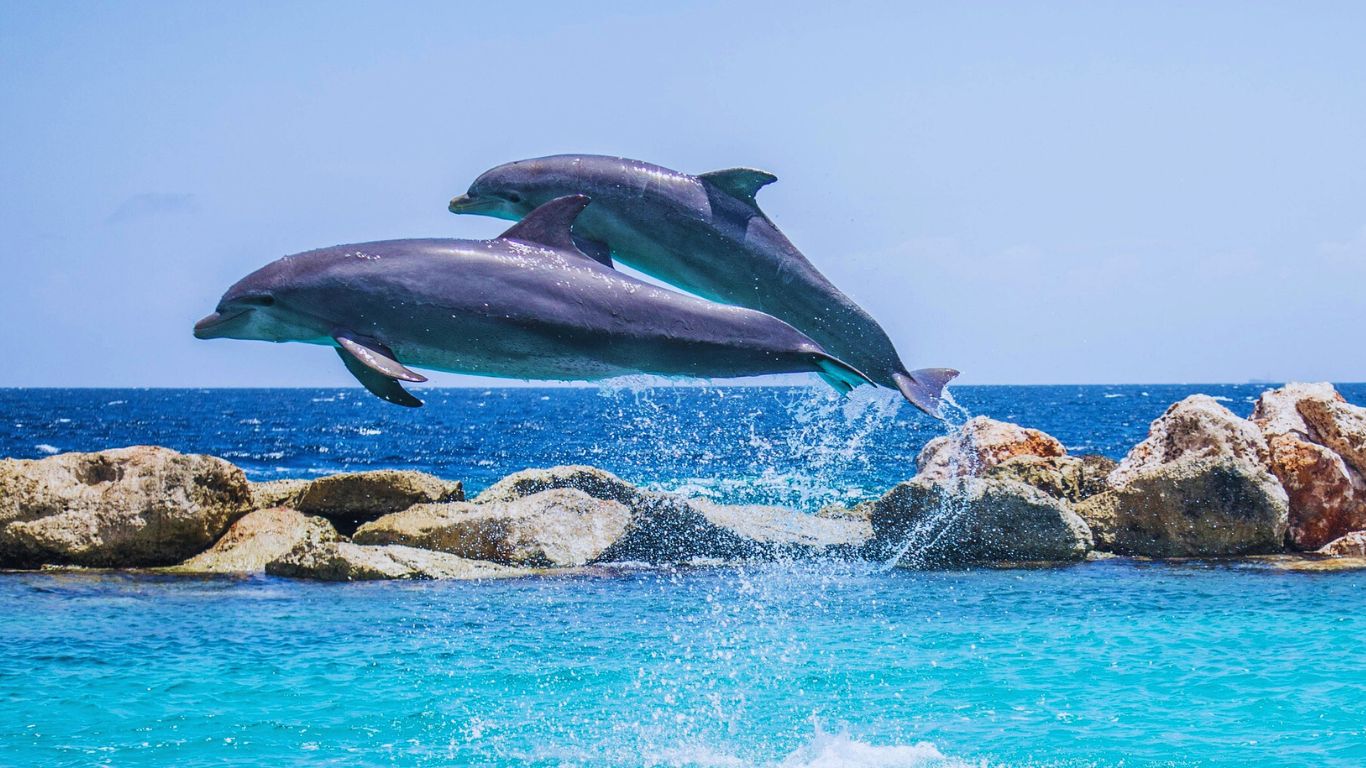
1. Predator Role: Dolphin fish are top predators in the oceanic food web. They feed on a variety of prey, including small fish, squid, shrimp, crabs, and other crustaceans. As predators, they help regulate the populations of their prey species, thereby influencing the balance and structure of the ecosystem.
2. Prey Role: While dolphin fish are predators, they also serve as prey for larger marine predators. Sharks, including species like bull sharks, tiger sharks, and great white sharks, are known to prey on dolphin fish. Additionally, larger predatory fish such as marlin, sailfish, and tuna may also target dolphin fish as a food source.
3. Energy Transfer: The feeding interactions involving dolphin fish are essential for energy transfer within the marine ecosystem. By consuming smaller fish and invertebrates, they help transfer energy from lower trophic levels to higher trophic levels. This process is crucial for maintaining the overall balance and productivity of the ecosystem.
4. Biodiversity Support: As a prey species, the presence of dolphin fish supports the biodiversity of marine ecosystems. Their abundance and availability provide a food source for a wide range of predators, including larger fish, sharks, marine mammals, and seabirds. Their role as prey contributes to the overall health and diversity of the ecosystem.
5. Indicator Species: Changes in the distribution and abundance of dolphin fish can serve as indicators of shifts in environmental conditions. Monitoring their populations can provide insights into the health and dynamics of the ecosystem. For example, fluctuations in their numbers may signal changes in oceanographic conditions, such as temperature, currents, or the availability of prey.
6. Economic Importance: Dolphin fish are economically significant for many coastal communities. They are highly sought after by commercial and recreational fisheries due to their fast growth rates and delicious flesh. Dolphin fish fishing supports livelihoods and local economies through employment opportunities, seafood markets, and tourism.
In summary, dolphin fish play a vital ecological role as both predators and prey in marine ecosystems. Their presence and interactions with other species contribute to the stability, biodiversity, and productivity of the ocean environment. Understanding their importance is crucial for the conservation and sustainable management of these remarkable creatures and the ecosystems they inhabit.
Dolphin Fish – Conservation Status and Threats
Conservation efforts for dolphin fish, also known as mahi-mahi or dorado, focus on maintaining their populations and ensuring their long-term survival. While they are not currently listed as endangered or threatened species, there are still several conservation concerns and potential threats they face. Here are some key aspects of dolphin fish conservation and the threats they encounter:

1. Overfishing: Overfishing is a significant threat to dolphin fish populations. They are highly prized by commercial and recreational fisheries due to their delicious flesh and popularity among anglers. Unsustainable fishing practices, such as excessive catch levels, bycatch (the unintentional capture of non-target species), and illegal fishing, can lead to population declines and disrupt the balance of the ecosystem.
2. Habitat Degradation: Habitat degradation and loss pose challenges to dolphin fish populations. Destruction of coastal habitats, such as mangroves and coral reefs, through human activities like coastal development and pollution, can reduce essential nursery areas and disrupt their life cycle. Additionally, pollution from runoff, marine debris, and chemical contaminants can negatively impact their health and habitat.
3. Climate Change: Climate change and associated impacts, such as rising ocean temperatures, altered currents, and ocean acidification, pose significant threats to dolphin fish. These changes can affect their prey availability, alter migration patterns, and disrupt their reproductive cycles. Adapting to rapidly changing conditions can be challenging for the species.
4. Bycatch and Discards: Dolphin fish can be unintentionally caught as bycatch in various fishing gear, such as longlines, gillnets, and purse seines. High levels of bycatch can have adverse effects on their populations, particularly when unsustainable fishing practices are involved. Efforts to reduce bycatch, such as implementing more selective fishing gear and employing proper handling and release techniques, are important for their conservation.
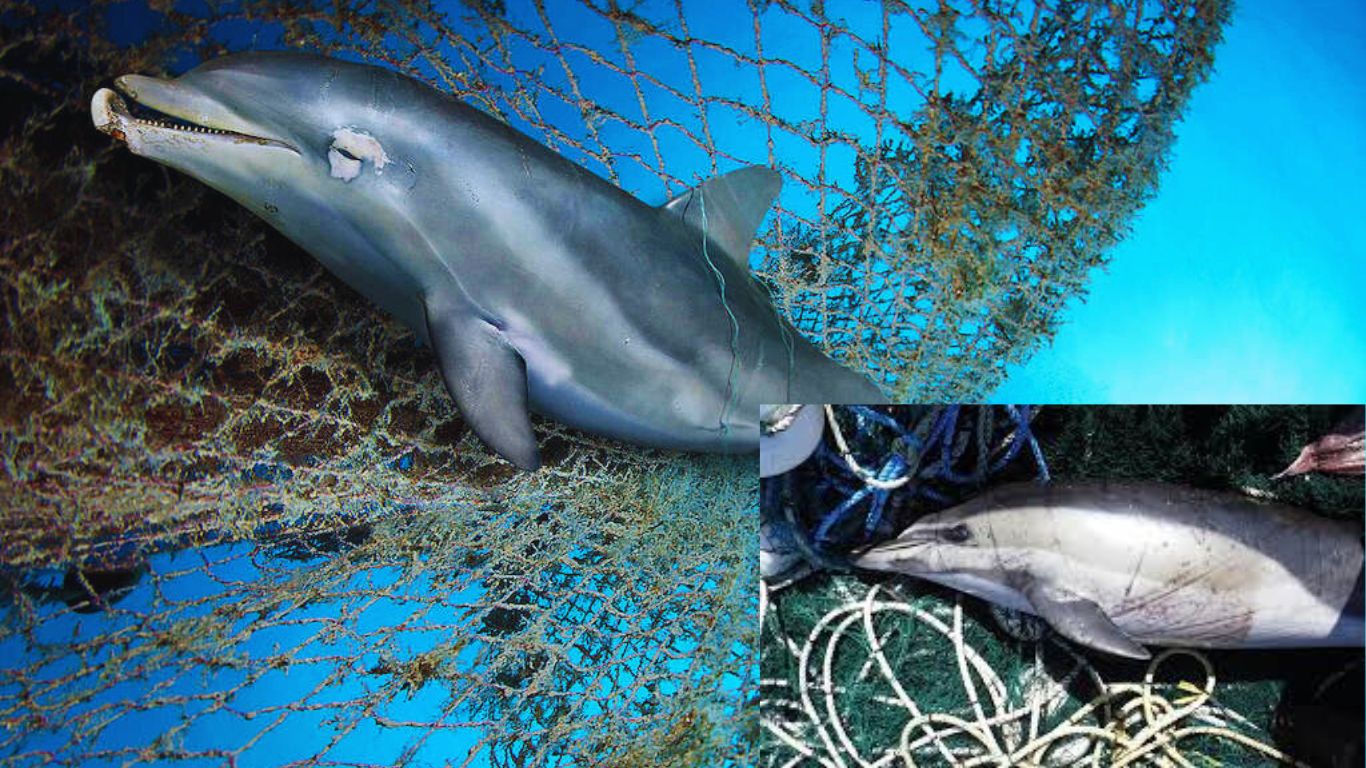
5. International Management: Effective international management and collaboration are essential for the conservation of dolphin fish. Ensuring responsible and sustainable fishing practices, establishing fishing quotas, promoting ecosystem-based management approaches, and regulating trade are crucial steps toward their protection.
Conservation measures for dolphin fish include implementing fishing regulations, promoting sustainable fishing practices, establishing marine protected areas, raising awareness about the importance of their conservation, and conducting scientific research to improve understanding of their biology and ecology. Collaborative efforts between governments, fisheries organizations, scientists, and local communities are vital for the long-term conservation and sustainable management of dolphin fish populations.
Dolphin Fish – Fun Facts and Myth Debunking
Here are some fun facts and myths about dolphin fish:
Fun Facts:
1. Dolphin fish are among the fastest swimmers in the ocean, reaching speeds of up to 50 miles per hour (80 kilometers per hour).
2. They are known for their acrobatic displays, often leaping out of the water and performing high jumps and flips.
3. Dolphin fish are not actually dolphins, despite their name. They are fish and belong to the Coryphaenidae family.
4. They have a relatively short life span, typically living for about 4 to 5 years, although some individuals may live longer under favorable conditions.
5. Dolphin fish can change colors rapidly, displaying vibrant hues of blue, green, yellow, and gold, especially during courtship and when excited or stressed.
6. Females are generally smaller than males, with males often exhibiting more pronounced head shapes and longer dorsal fins.
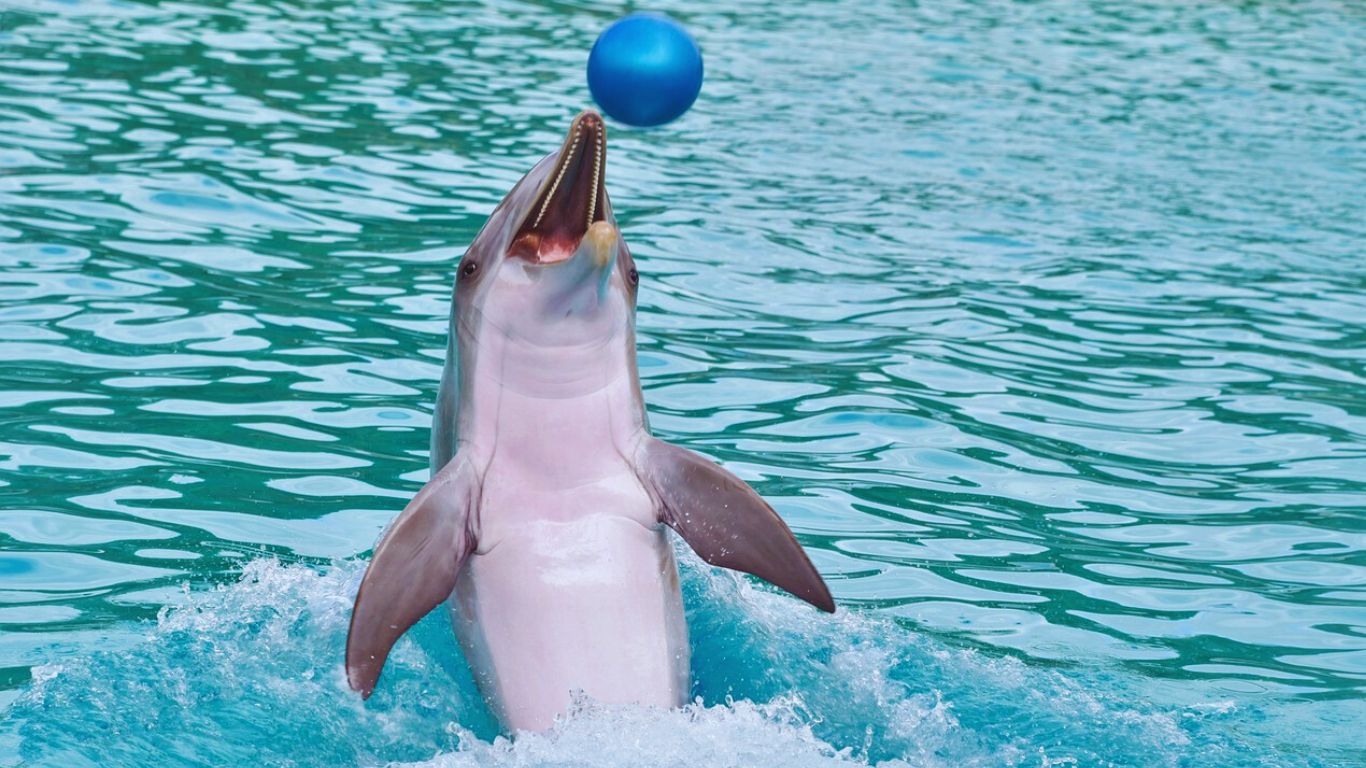
Myth Debunking:
1. Myth: Dolphin fish are poisonous or unsafe to eat.
Fact: Dolphin fish are safe and delicious to consume. They are highly prized in culinary traditions worldwide, with their firm and flavorful flesh.
2. Myth: Dolphin fish are related to dolphins, the marine mammals.
Fact: Despite their similar names, dolphin fish are not closely related to dolphins. They are actually a type of fish, while dolphins are mammals.
3. Myth: Dolphin fish are exclusively found near dolphins.
Fact: While dolphin fish may sometimes be found in the vicinity of dolphins, their presence is not exclusively linked to dolphins. They inhabit different areas of the ocean and have distinct behaviors and characteristics.
4. Myth: All dolphin fish are large in size.
Fact: While dolphin fish can grow to substantial sizes, ranging from 3 to 6 feet (0.9 to 1.8 meters) on average, they can also be smaller, especially when they are younger or in certain regions.
5. Myth: Dolphin fish are not found in cold waters.
Fact: While dolphin fish prefer warm and tropical waters, they can be found in colder regions during certain seasons or due to changing oceanographic conditions.
6. Myth: Dolphin fish are overly aggressive or dangerous to humans.
Fact: Dolphin fish are not typically aggressive towards humans and are known for their playful and curious behavior. However, as with any wild animal, it is important to exercise caution and respect their space when encountering them.
These fun facts and myth debunking help shed light on the fascinating world of dolphin fish, clearing up misconceptions and providing a better understanding of their characteristics and interactions with the marine environment.
Conclusion
In conclusion, the remarkable dolphin fish, also known as mahi-mahi or dorado, captivates with its striking beauty and impressive characteristics. Throughout this article, we have delved into the world of dolphin fish, exploring their physical features, habitat, behavior, and significance to both marine ecosystems and recreational fishing.
Dolphin fish are renowned for their vibrant colors, with their iridescent blue and green hues shimmering under the sunlight. Their streamlined bodies and powerful tails enable them to swiftly navigate the open waters, showcasing their agility and speed. These magnificent creatures are found in tropical and subtropical oceans worldwide, often congregating near floating debris and weed lines, where they find ample food sources.

Not only are dolphin fish a delight to observe, but they also play a crucial role in marine ecosystems. As voracious predators, they help regulate the populations of smaller fish, maintaining a balanced food web. Their presence attracts a diverse array of marine life, from seabirds to larger predatory species, contributing to the overall biodiversity of their habitats.
Dolphin fish are highly sought after by anglers for their fighting spirit and delectable flesh. Their acrobatic displays and powerful runs make them a prized catch in sportfishing, drawing enthusiasts from around the world. However, it is important to engage in responsible fishing practices, adhering to local regulations and guidelines to ensure the sustainability of dolphin fish populations.
Conservation efforts focused on dolphin fish are vital for their long-term survival. Implementing sustainable fishing practices, such as catch-and-release techniques, and promoting the use of non-entangling fishing gear help minimize the impact on their populations. Additionally, protecting their habitats, reducing pollution, and raising awareness about the importance of dolphin fish contribute to their preservation.
In conclusion, the dolphin fish is a true marvel of the oceans. Its beauty, agility, and ecological significance make it a captivating subject of study and admiration. By appreciating and safeguarding these incredible creatures, we can ensure their continued existence for generations to come, allowing future generations to marvel at their grace and play an active role in marine conservation.
Some other articles, you might be interested in.
From Backbones to No Bones: Exploring Vertebrates and Invertebrates in Sea Animals
Discover the Angel Fish: Characteristics, Habitat, and More
Are Manatees Dangerous ?: Here’s What You Need to Know


2 thoughts on “Dolphin Fish: Also known as Mahi-Mahi or Dorado”